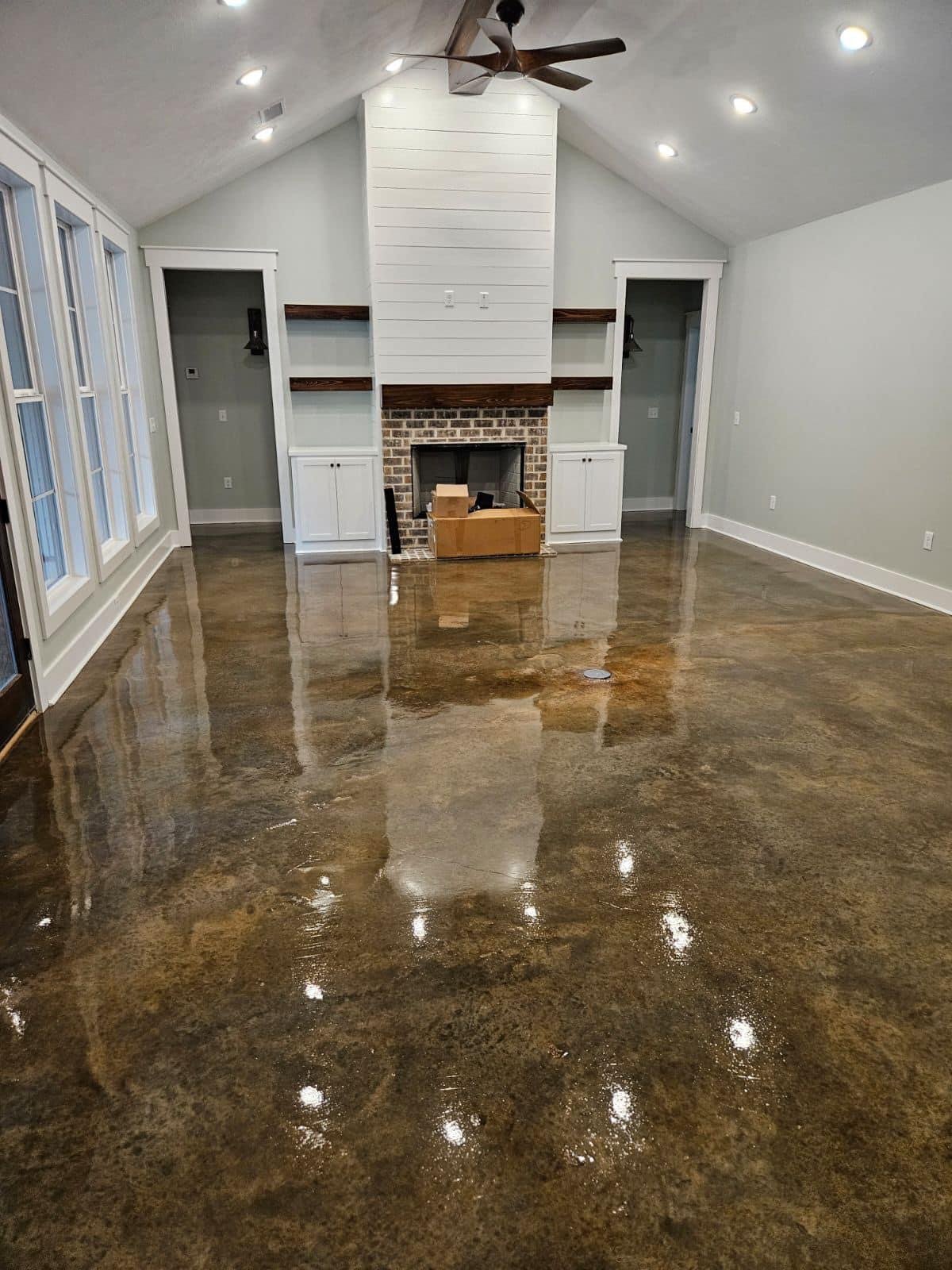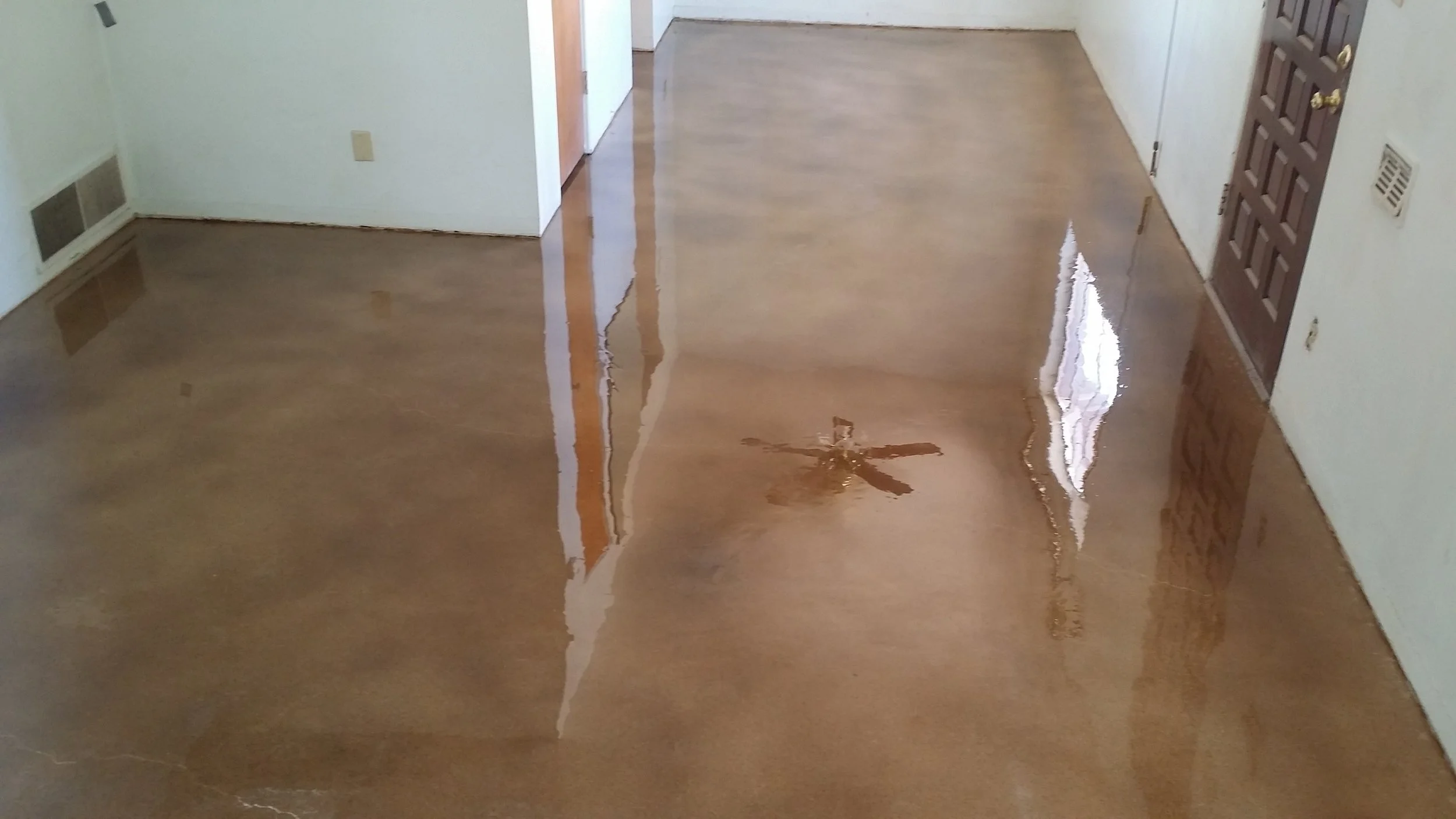Commercial Stained Concrete Floors That Withstand Daily Wear and Look Stylish
Why Local Stained Flooring Is the Perfect Choice for Sustainable Home Renovation
In the realm of lasting home enhancement, local tarnished flooring has actually emerged as a prominent selection among eco aware home owners. As a cost-efficient financial investment with lowered maintenance demands, it increases a thought-provoking inquiry: could this be the excellent solution for sustainable housing?
Comprehending the Principle of Neighborhood Discolored Floor Covering
While the idea might seem unique to some, local tarnished flooring is a cutting-edge technique to home enhancement that combines aesthetics, durability, and sustainability. The discoloration procedure not only boosts the natural charm of the wood grain but additionally adds a layer of defense, raising the long life of the floor covering. Making use of local timber types often supports regional economic climates and advertises liable forest monitoring methods.
The Appearance of Regional Discolored Floor Covering
Why is regional tarnished floor covering gaining popularity for its appearances? The answer exists in the distinct appeal and personality it brings to any type of room. Neighborhood stained floor covering uses a varied variety of patterns and colors, showing the all-natural elegance and variations of the regional wood types used. This produces a special, customized visual that can not be replicated by mass-produced choices. In addition, the staining process enhances the wood's innate grain and structure, adding deepness and splendor to the floor's appearance. This rustic beauty flawlessly blends with various interior decoration styles, from conventional to modern-day, making it a flexible option for house owners. Inevitably, the appeal of neighborhood tarnished floor covering lies in its capacity to change homes into distinct, visually appealing areas while advertising sustainability.
Ecological Influences of Local Discolored Floor Covering
The environmental ramifications of neighborhood tarnished flooring encompass two significant factors: decreasing carbon footprint and waste minimization advantages. Utilizing locally sourced products for discoloring not just reduces transport discharges, however likewise promotes lasting forestry techniques. The waste minimization aspect comes right into play as these floor covering kinds usually have a longer life expectancy, reducing the frequent requirement for replacements and the waste linked with it.
Minimizing Carbon Footprint
As homeowners turn to even more lasting options, regional tarnished floor covering becomes a sensible service to minimize carbon footprint. This sort of floor covering mainly utilizes in your area sourced products, which dramatically reduces the need for transport. Consequently, this reduces emissions related to products transport, adding to reduced levels of greenhouse gases in the atmosphere. The process of staining the flooring, rather than making use of synthetic coatings, involves less chemicals and much less energy-intensive treatments. This leads to a reduction in carbon exhausts throughout the manufacturing procedure. Selecting neighborhood discolored floor covering shows an effective step in advertising environmental sustainability, highlighting a tangible way home owners can contribute to combating climate change from the comfort of their very own homes.
Waste Minimization Perks
Although frequently neglected, waste minimization is another considerable advantage of regional tarnished flooring. By picking this option, property owners help in reducing the mass of waste headed to garbage dumps. This floor covering type, normally sourced from local timber, can be restored, refinished, and recycled, including in its longevity. Unlike synthetic flooring, it does not add to the growth of non-biodegradable waste. In addition, the staining procedure makes use of less sources and produces less waste compared to manufacturing brand-new flooring products. Furthermore, any type of waste produced during the staining procedure is biodegradable and usually organic, mitigating ecological damage. The selection of regional discolored floor covering not just enhances homes but likewise underpins a dedication to sustainable living and waste reduction.
The Resilience and Upkeep of Local Discolored Floor Covering

The Cost-Effectiveness of Local Discolored Flooring
While neighborhood discolored floor covering could initially appear a lot more expensive than various other alternatives such as carpeting or laminate, its durability and durability rapidly turn it into an moved here economical option. The upfront price is commonly countered by the reduction in maintenance costs over time. Unlike carpetings that require normal deep cleaning or laminate that might call for substitute after a couple of years, tarnished floorings are built to last, decreasing the requirement for costly repair work or replacement. Local sourcing of products decreases transportation prices, contributing to both financial cost savings and a lower carbon footprint. For house owners seeking a lasting, affordable option for their flooring needs, neighborhood discolored flooring arises as an exceptional, lasting investment that repays in time.

The Real World Examples of Sustainable Residences With Local Tainted Flooring
In the world of sustainable home enhancement, regional tarnished floor covering has become a prominent option. To better show its benefits, numerous the real world examples of green homes that have effectively integrated this flooring technique will be highlighted. These study offer concrete proof of the advantages and influence of making use of neighborhood tarnished flooring in sustainable homes.

Display: Eco-Friendly Floor Covering Residences
Checking the world, one can find various homes that embody the concept of environment-friendly living with the usage of neighborhood tarnished floor covering. In the heart of Denmark, a minimal home prides itself on its oak-stained floorings, sourced and treated within the local region. Throughout seas in copyright, a modern-day residence showcases its abundant, maple-stained flooring, a testimony to the abundant local timber supply. Down under in Australia, a beach home beams with its eucalyptus-stained floors, showing the country's indigenous vegetation. These homes not just showcase the visual convenience of regional discolored flooring yet likewise its contribution to a more lasting way of life. Each floor tells a tale of respect for the setting, verifying that style and sustainability can certainly exist side-by-side.
Regional Tarnished Floor Covering Benefits
The undeniable attraction of local discolored flooring expands beyond its aesthetic appeal, as it also provides considerable advantages to both homeowners and the environment. This sort of flooring is sourced and produced in your area, minimizing transport exhausts and bolstering the local economic situation. The discoloration procedure utilizes natural, safe products, promoting interior air high quality and minimizing the home's environmental impact. In a lasting home in Portland, Oregon, as an example, local tarnished concrete floors not just boost the visual appeals but additionally function as thermal mass, absorbing warmth throughout the day and releasing it during the night, reducing power usage. An additional instance is a green-certified home in Austin, Texas, where locally sourced walnut was discolored his response and used for floor covering, contributing to the home's LEED certification.
Final thought
In conclusion, neighborhood stained floor covering is a sensible and lasting choice for home improvement. With its one-of-a-kind blend of ecological, visual and cost-effective benefits, neighborhood tarnished flooring is a clear selection for property owners looking for a lasting, cost-effective and visually enticing home improvement option.
In the realm of sustainable home renovation, neighborhood stained flooring has emerged as a popular choice among environmentally mindful house owners. Neighborhood tarnished floor covering offers a diverse range of shades and patterns, reflecting the natural beauty and variants of the local wood types utilized. The choice of neighborhood tarnished floor covering not just beautifies homes yet likewise underpins a commitment to sustainable living and waste decrease.
For house owners seeking a sustainable, affordable remedy for their floor covering needs, neighborhood discolored flooring emerges as a superior, long-lasting investment that pays off over time. Residential Stained Concrete Floors.
With its distinct mix of ecological, cost-effective and visual advantages, regional tarnished flooring is a clear selection for house owners seeking a sustainable, visually attractive and cost-effective home enhancement solution.